Age of Steam Roundhouse


Vintage sign from the Ohio Central System Railroad.
Age of Steam Roundhouse
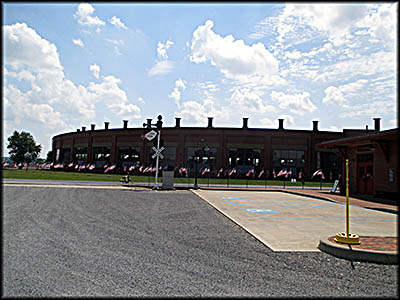
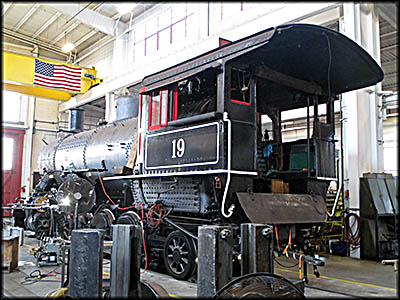
Back Shop
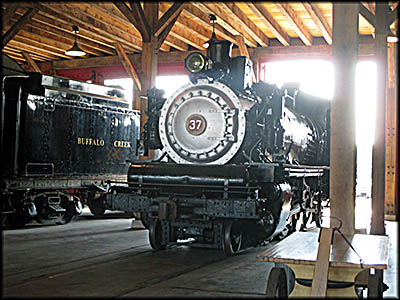
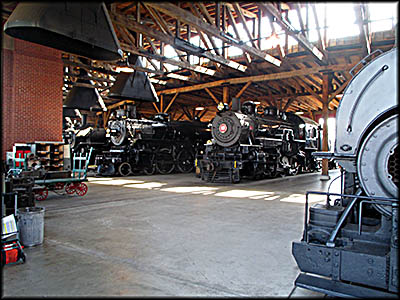
Inside the Roundhouse
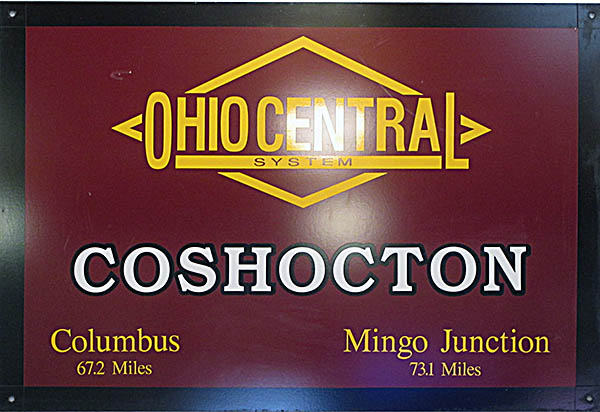
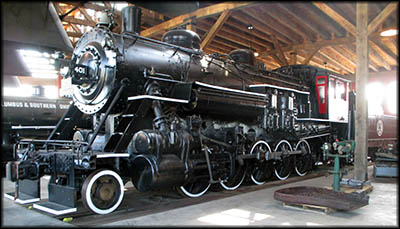
No. 401 Engine
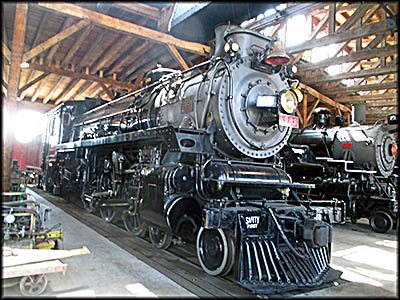
No. 1293 Engine
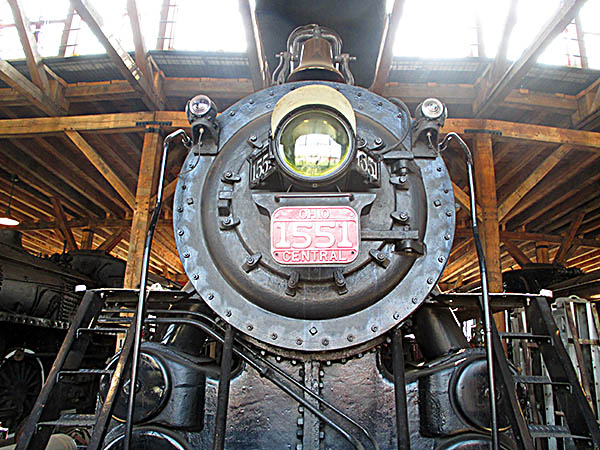
No 1551 Engine
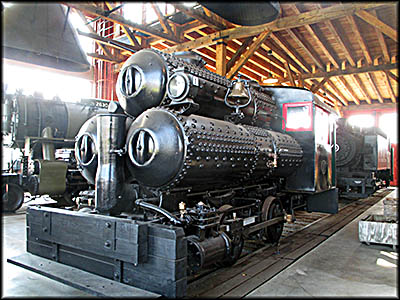
No. 1 is not a steam engine at all. Instead it used compressed air to move on a farm in Cuba so embers didn't light the fields on fire. It had to be recharged about every seven miles.
No. 2 uses superheated water under immense pressure that, when released, turned into steam and moved the engine. It could run for about eight hours before needed recharged.
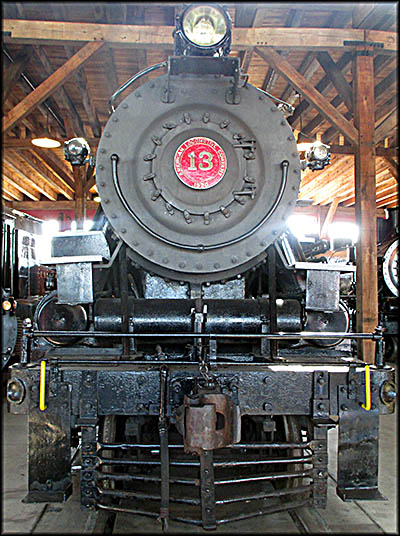
No. 13 Engine
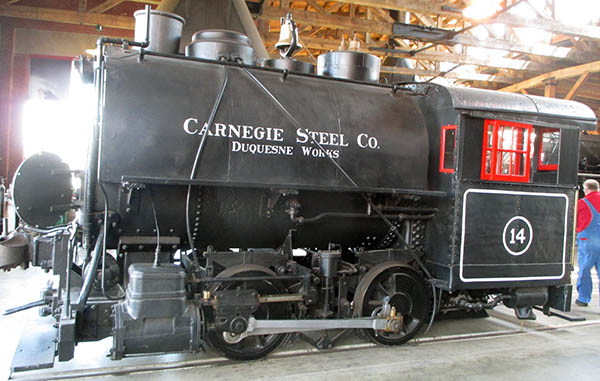
No. 14 Engine
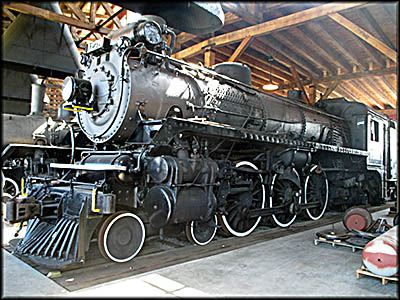
No. Engine 1278

No. Engine 1293
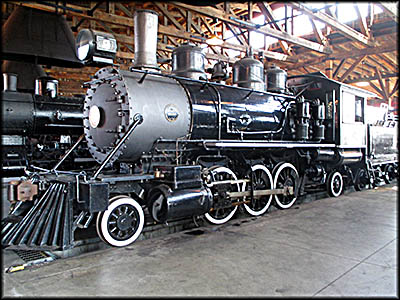
No. Engine 18596
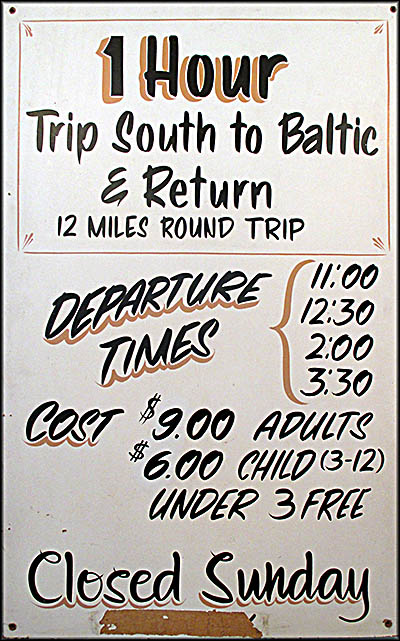
Pricing sign for the steam engine trips Jerry Jacobson ran from 1989 to 2003.
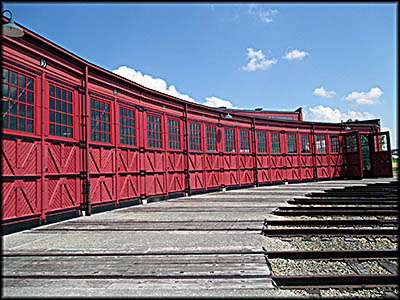
Roundhouse entrance for the trains by the turntable.
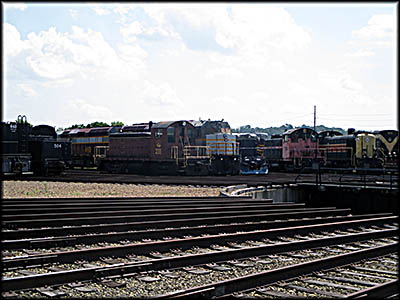
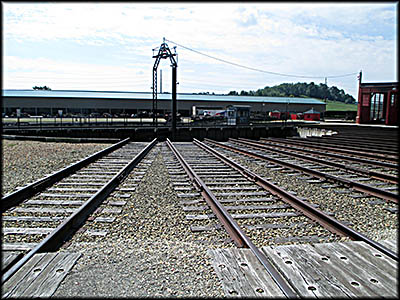
Turntable
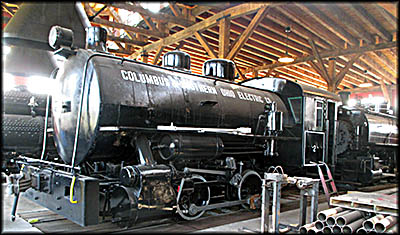
I knew that the Age of Steam Roundhouse was in Sugarcreek, Ohio, but on my various visits to that place, I’d never seen it. When I sought it ought, I found out why: by car, the museum about seven minutes south of Sugarcreek and well out of sight of the village. I had no idea that this museum was so large, nor that it had in its collection so many steam engines. Indeed, I couldn’t get far enough away to take a photo the encompasses the entire roundhouse, which is why there are just parts of it in the photos here.
The roundhouse is considered an industrial workspace, so you are limited where you can go. In addition to the main tour guide, there is also a “herder” to ensure everyone stays with the group and, if anyone needs to return to the administrative building from which you buy your tickets, this person escorts them there. Which happened during the tour I took. A family gave up half way through because their small children had grown bored and restless. I fell afoul of the herder when I purposely stayed back in an effort to take photos without people in the way. The herder told me and another person also taking photos that we weren’t allowed to be so far behind.
The museum was founded by Jerry Joe Jacobson, who in addition to being a full time nurse anesthetist starting in 1968, bought the Ohi-Rail Corporation in 1984. This was formed in 1982 to take over track abandoned by the Pennsylvania Railroad. In 1988 Jacobson founded the Ohio Central System Railroad, a short line road that hauled freight.
The roundhouse is considered an industrial workspace, so you are limited where you can go. In addition to the main tour guide, there is also a “herder” to ensure everyone stays with the group and, if anyone needs to return to the administrative building from which you buy your tickets, this person escorts them there. Which happened during the tour I took. A family gave up half way through because their small children had grown bored and restless. I fell afoul of the herder when I purposely stayed back in an effort to take photos without people in the way. The herder told me and another person also taking photos that we weren’t allowed to be so far behind.
The museum was founded by Jerry Joe Jacobson, who in addition to being a full time nurse anesthetist starting in 1968, bought the Ohi-Rail Corporation in 1984. This was formed in 1982 to take over track abandoned by the Pennsylvania Railroad. In 1988 Jacobson founded the Ohio Central System Railroad, a short line road that hauled freight.
Owning it gave Jacobson the ability to run one hour roundtrip steam engine excursions from Sugar Creek to Baltic on Sundays from 1989 to 2003. The first engine used for these ventures was a shop switcher built in 1929 for the Baldwin Locomotive Works in Eddystone, Pennsylvania. Although he and his team restored it, he ultimately deemed it too small and traded it to the Steamtown National Historic Site for a larger one.
During his years as the owner of the Central Ohio System, he amassed a large collection of vintage steam locomotives. After selling the company to the Genesee & Wyoming Railroad in 2008, he needed somewhere to store his locomotive collection because the road’s new owners weren’t going to let him keep it on their property. With the blessing and partnership of his wife, Laura, Jacobson decided to build a roundhouse for their preservation and display. Modeled after a 1940s-era roundhouse, construction began in 2010. Completed the next year, the museum opened on October 13, 2012.
During his years as the owner of the Central Ohio System, he amassed a large collection of vintage steam locomotives. After selling the company to the Genesee & Wyoming Railroad in 2008, he needed somewhere to store his locomotive collection because the road’s new owners weren’t going to let him keep it on their property. With the blessing and partnership of his wife, Laura, Jacobson decided to build a roundhouse for their preservation and display. Modeled after a 1940s-era roundhouse, construction began in 2010. Completed the next year, the museum opened on October 13, 2012.
Traditionally roundhouses served as place to store, switch and repair engines. Because it could take up to thirty-six hours after starting a steam locomotive’s fire for its water to reach its boiling point, engines were left running while being worked on. Above their stacks were exhaust vents to allow the smoke go outside. Locomotives needing more than three days’ work were sent to the back shop where their fires were extinguished.
The Age of Steam Roundhouse is no different. Minor work on its collection is done in the roundhouse proper, while more expensive repairs or restorations are made in its back shop. Work on rolling stock (train cars) is also done here. The shop can fabricate just about any part it needs save for those cast in molten steel. For that they have to order what they need from a foundry in Pennsylvania.
After the museum’s opening, Jacobson continued to buy new engines, sometimes from eBay! He bought from it, as an example, No. 643 for $200,000. No. 19, an operational engine, was purchased at a Sheriff’s sale for $200,000. He bought No. 105 from the estate of a deceased friend to help this man’s heirs out. Later, that same train gave Jacobson a twenty-one whistle salute during his funeral in September 2017.
The Age of Steam Roundhouse is no different. Minor work on its collection is done in the roundhouse proper, while more expensive repairs or restorations are made in its back shop. Work on rolling stock (train cars) is also done here. The shop can fabricate just about any part it needs save for those cast in molten steel. For that they have to order what they need from a foundry in Pennsylvania.
After the museum’s opening, Jacobson continued to buy new engines, sometimes from eBay! He bought from it, as an example, No. 643 for $200,000. No. 19, an operational engine, was purchased at a Sheriff’s sale for $200,000. He bought No. 105 from the estate of a deceased friend to help this man’s heirs out. Later, that same train gave Jacobson a twenty-one whistle salute during his funeral in September 2017.
No. 401, which was being sold for scrap, was bought for just $10,000 plus a $1,000 auctioneer’s fee. This sounds like a bargain, but getting it from its home in Wisconsin to the museum was no mean feat. Transportation costs amounted to about $79,000. It’s small wonder. Some of the steam engines in the collection are absolute monsters. Eyeballing it, I’d say a few along with their tenders have a length equal to 2 to 2½ modern electric-diesel engines.
There were two main types of steam locomotives: those designed for pulling passengers and those for freight. Passenger engines had much larger wheels because it allowed them to move farther with one piston stroke cycle than one with small wheels. It also provided a smoother ride and more speed. Freight trains had small wheels because it gave them more torque, which you need when you’re pulling thousands of pounds.
For the most part when a railroad purchased a steam engine, it did so as a custom order based on the purpose and environment the locomotive would operate in. A good example of this in the collection is No. 33. Needed for use in Michigan’s Upper Peninsula to haul iron ore to Lake Superior, it would traverse tight curves and had to be short in length. Engines purchased from a factory cost a fortune, but during the Great Depression the Ohio-based Wheeling & Lake Erie Railroad found a way to save money and keep its employees busy: it built its own.
There were two main types of steam locomotives: those designed for pulling passengers and those for freight. Passenger engines had much larger wheels because it allowed them to move farther with one piston stroke cycle than one with small wheels. It also provided a smoother ride and more speed. Freight trains had small wheels because it gave them more torque, which you need when you’re pulling thousands of pounds.
For the most part when a railroad purchased a steam engine, it did so as a custom order based on the purpose and environment the locomotive would operate in. A good example of this in the collection is No. 33. Needed for use in Michigan’s Upper Peninsula to haul iron ore to Lake Superior, it would traverse tight curves and had to be short in length. Engines purchased from a factory cost a fortune, but during the Great Depression the Ohio-based Wheeling & Lake Erie Railroad found a way to save money and keep its employees busy: it built its own.
Another engine in the collection, No. 2630 (model S-160), is a rare example one that was mass produced. Built during World War II by Baldwin Locomotive Works in Pennsylvania, it was commissioned by the United States Army Transportation Corps for use in Europe and the United States. 2,120 of these were built by three American locomotive makers. They were purposely overengineered by 400% and constructed with a half-thickness of regular engines because of steel rationing. It was anticipated that many would be destroyed in warzones, so by making them identical, those permanently disabled could be used for parts for ones that could be repaired. The S-160 in the museum’s collection stayed in the United States and was used for many years by army to teach soldiers how to operate a steam locomotive in case the American military had to operate in a country still using them. It was decommissioned in 1972.
Each of the museum’s engines has a story to tell. No. 643 is the largest in the collection. Designed to haul 100,000 pounds of steel, it has a power booster that helped it get moving. No. 152 was a Baltimore & Ohio Railroad switching engine. No. 6325 is the fastest in the collection. Once used by the Grand Trunk Railway, it can go at least ninety miles per hour. Nos. 3, 1293, and 1551 were used by Jacobson for the trips between Sugar Creek and Baltic. No. 1293 was Jacobson’s favorite.
The roundhouse is built around an outside turntable once owned by the Western Maryland Railroad. Getting a train onto this involves opening a 16 foot heigh door that weighs 2,300 pounds. Engineered to open with human power, high winds are known to make this process exceedingly difficult. In the yards beyond the roundhouse are more engines as well as rolling stock. You can purchase a separate ticket for the yard tour, which was $80 at the time of this writing—too expensive for my taste.
Each of the museum’s engines has a story to tell. No. 643 is the largest in the collection. Designed to haul 100,000 pounds of steel, it has a power booster that helped it get moving. No. 152 was a Baltimore & Ohio Railroad switching engine. No. 6325 is the fastest in the collection. Once used by the Grand Trunk Railway, it can go at least ninety miles per hour. Nos. 3, 1293, and 1551 were used by Jacobson for the trips between Sugar Creek and Baltic. No. 1293 was Jacobson’s favorite.
The roundhouse is built around an outside turntable once owned by the Western Maryland Railroad. Getting a train onto this involves opening a 16 foot heigh door that weighs 2,300 pounds. Engineered to open with human power, high winds are known to make this process exceedingly difficult. In the yards beyond the roundhouse are more engines as well as rolling stock. You can purchase a separate ticket for the yard tour, which was $80 at the time of this writing—too expensive for my taste.
Steam locomotives weren’t the magical machines that nostalgia makes them out to be. To run one you needed both water and fuel plus someone to constantly feed the fire. Wood burners were extremely expensive because of the time it took to chop the wood into small enough pieces to be thrown into the fire. Coal was better but bulky. Near the end of their days, many steam locomotives switched to oil. No matter what the fuel, they produced a lot of air pollution. Which became a major problem in cities where so many ran at once.
The diesel-electric engine, invented by General Electric, came on the market in 1917. They were little used until the New York State Legislature passed the Kaufman Electrification Act in 1923 that mandated all engines being used in New York City run on electric. There were no exceptions. Diesel-electrics qualified because their wheels are moved by electric motors powered by a generator fueled by the diesel. Outside cities and yards, railroads continued using steam engines until after War II at which time economics compelled them to make the switch.
In addition to be much cheaper and cleaner to operate, diesel-electrics required less crewmen. Railroads love to cut jobs to save money when they can, so this is no surprise. Diesel-electrics could also be chained together with a single engineer running them from the lead engine. The last major road to replace its steam engines was Norfolk & Western (now Norfolk & Southern). It did so in 1960. And yes, there are examples of steam engines still being used in America here and there after that year, but these were isolated cases and not for entire lines.🕜
The diesel-electric engine, invented by General Electric, came on the market in 1917. They were little used until the New York State Legislature passed the Kaufman Electrification Act in 1923 that mandated all engines being used in New York City run on electric. There were no exceptions. Diesel-electrics qualified because their wheels are moved by electric motors powered by a generator fueled by the diesel. Outside cities and yards, railroads continued using steam engines until after War II at which time economics compelled them to make the switch.
In addition to be much cheaper and cleaner to operate, diesel-electrics required less crewmen. Railroads love to cut jobs to save money when they can, so this is no surprise. Diesel-electrics could also be chained together with a single engineer running them from the lead engine. The last major road to replace its steam engines was Norfolk & Western (now Norfolk & Southern). It did so in 1960. And yes, there are examples of steam engines still being used in America here and there after that year, but these were isolated cases and not for entire lines.🕜